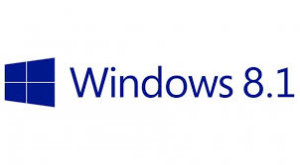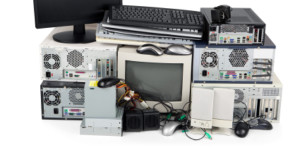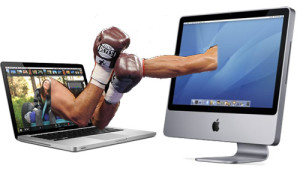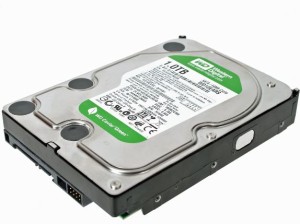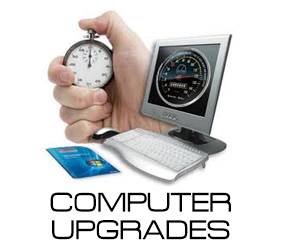 October looks to be shaping up to be a big month for operating system upgrades. Microsoft has announced it on October 18 Windows 8.1 will be released. While Apple has not yet made an official announcement, there seems to be a lot of conjecture that OSX Mavericks will be made available in October also. Many people quickly jump in and perform the upgrades without thinking about any preparation. Preparing to make one of these major upgrades is often a good thing to consider.
October looks to be shaping up to be a big month for operating system upgrades. Microsoft has announced it on October 18 Windows 8.1 will be released. While Apple has not yet made an official announcement, there seems to be a lot of conjecture that OSX Mavericks will be made available in October also. Many people quickly jump in and perform the upgrades without thinking about any preparation. Preparing to make one of these major upgrades is often a good thing to consider.
Regardless of which operating system you use, performing a major upgrade often puts your data at risk. While both Microsoft and Apple do extensive testing on their major operating system upgrades, often times things can go wrong very easily. Apple has the benefit of having a more closed environment so that it can test its operating system among many machines and many platforms to ensure that the upgrade go smoothly. On the other hand, Microsoft, which supports many more machine types and many more upgrade possibilities, has a more difficult time in testing these major upgrades. That’s not to say that either company doesn’t do everything humanly possible to ensure that their upgrade go smooth. It just says there are many possibilities that are hard to account for and doing testing.
So what’s the average user to do to ensure that their upgrade goes well. A little preparation upfront, and ensuring that your backup is up-to-date are the major things that you want to accomplish.
More than a year in the making, Microsoft has been preparing for a major upgrade to windows. Since Windows 8 was released, many reports in the press have paned it as a poor operating system for the average user. In post I made this blog, I’ve explained how Windows 8 is a fine operating system but only if you have a touchscreen machine. Unfortunately that recommendation doesn’t change much with Windows 8.1. Microsoft has spent a lot of opportunity to upgrade this operating system to take care of many things that people of complained about. Unfortunately the ability to use it on a non-touchscreen machine really hasn’t improved that much. That’s not to say that I wouldn’t go ahead and perform the upgrade if I have a Windows 8 machine. Windows 8.1 will add some nice new features and stability to the computer.
Before you begin the backup process you want to make sure that you have a good backup of your data. Unfortunately, in Windows 8, Microsoft backup utility is less than desirable. This utility is fine for incrementally backing up changes to files made over days but not necessarily the best in the world for complete recovery. The main thing to be concerned about is your user data. I recommend copying everything in your user folder over to an external hard drive. This ensures that you have it and can recover it if necessary. Before you do this ensure that you turn on hidden files and folders so the data is stored in the application library can be moved to.
Once you have a good backup, perform the upgrade as you would any other Microsoft upgrade. Since this is a major upgrade expected to take at least an hour, and ensure that you have your computer plugged into power if it’s a battery power unit.
Since Mavericks is a major upgrade, the odds that Apple will require a small charge are very good. Like most Apple upgrades these days, they come from the app store. Login to the app store and purchase the upgrade. One important thing to note is that Apple provides license for you to upgrade up to five machines with each iCloud account that you purchase from. But the machine you use must be tied to your iCloud account for this to happen. Before you begin this backup ensure that your Time Machine backup is completely up-to-date. If you click on the Time Machine icon in your menubar it will tell you the last time your time machine has updated. I recommend going to the App Store and updating any applications you purchase there before you perform the upgrade to Mavericks. Once you purchase it from the app store, it will download and begin the upgrade process. This version is also a major upgrade to the Mac operating system so you should allocate at least an hour for the upgrade process to happen, and more time if you have a slow Internet connection for the download. Also if your machine is a laptop ensure that it’s plugged into power. Recent Apple updates have stopped in the middle of the process if you were not plugged into power and ensure that you plug it in before you start.
Keep in mind, these are pretty major upgrades. In all upgrades I would recommend waiting three days to a week before you apply. This just ensures that the manufacture doesn’t find something immediately after the upgrade and put out another patch that you would have to later apply.
I want to reiterate the fact that both Microsoft and Apple put a lot of time into these major upgrades. Having a backup of your data before you risk it to some upgrade only makes sense. The odds are highly in your favor that you will not need to use these backups but that doesn’t mean that you shouldn’t go ahead and have them.
Hopefully everything in your upgrade will go well. I have done some preliminary testing on both of these releases and fielder both a good upgrade for you to perform. Feel free to leave feedback as to how your upgrade goes.

